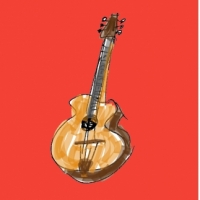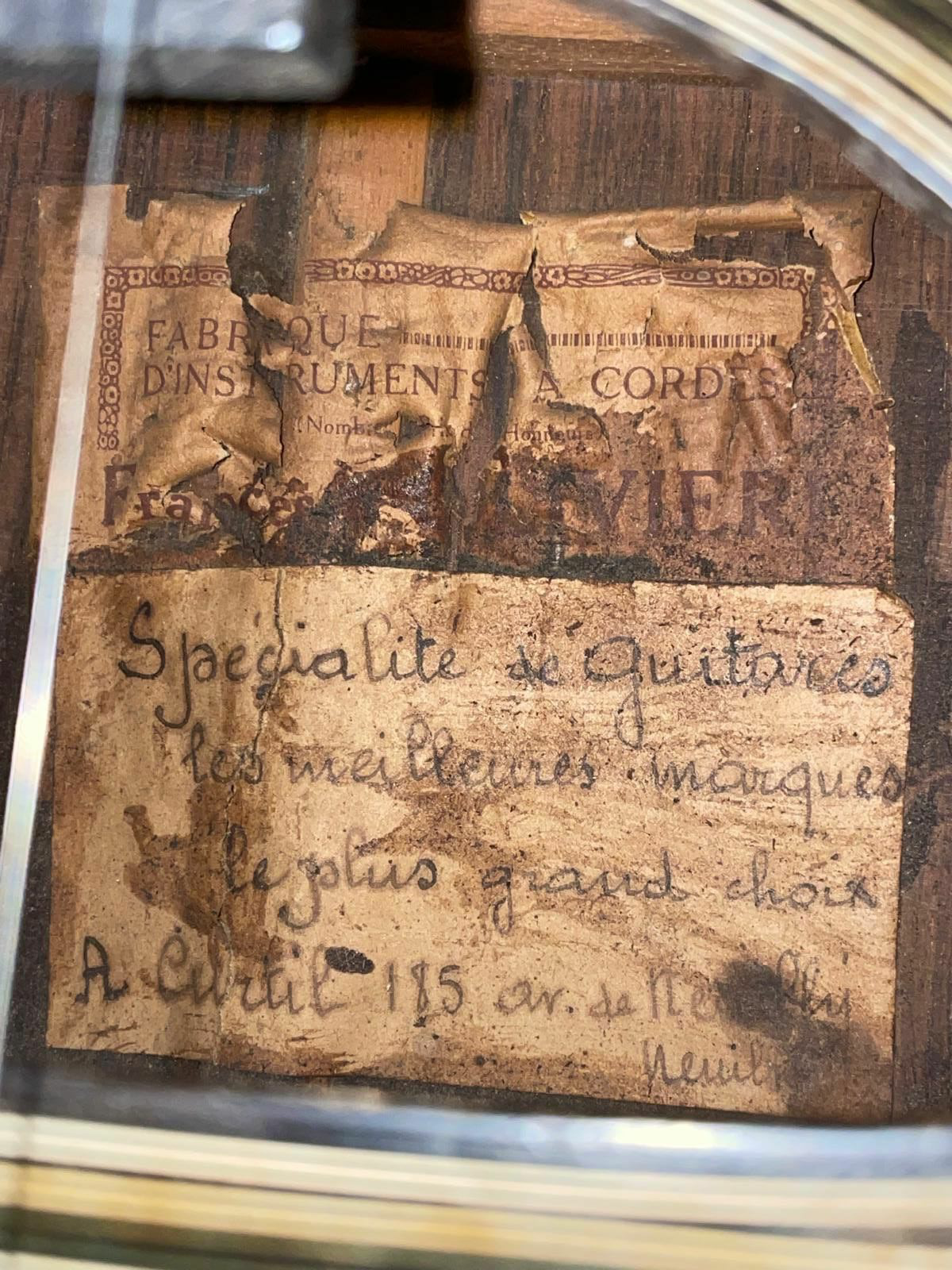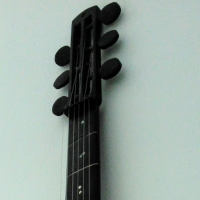DjangoBooks.com
Welcome to our Community!
Categories
- 20K All Categories
- 1.1K General
- 476 Welcome
- 59 Archtop Eddy's Corner
- 146 CD, DVD, and Concert Reviews
- 384 FAQ
- 26 Gypsy Jazz Italia
- 26 Photos
- 202 Gypsy Picking
- 21 Unaccompanied Django
- 15 Pearl Django Play-Along Vol.1
- 17 Gypsy Fire
- 45 Gypsy Rhythm
- 1.4K Gypsy Jazz University - Get Educated
- 130 Gypsy Jazz 101
- 224 Repertoire
- 218 History
- 707 Technique
- 51 Licks and Patterns
- 6 Daniel Givone Manouche Guitare Method Users Group
- 20 Eddie Lang Club
- 1.3K Gypsy Jazz Gear
- 801 Guitars, Strings, Picks, Amps, Pickups and Other Accessories
- 457 Classifieds
- 49 Recording
- 62 Other Instruments
- 18 Violin
- 5 Mandolin
- 22 Accordion
- 7 Bass
- 10 Woodwinds
- 347 Gypsy Jazz Events
- 143 North America
- 109 Europe
- 95 International
Who's Online (0)
Interesting vintage guitar
 Willie
HamburgNew
Willie
HamburgNew
This guitar is for sale in Hamburg:
As the owner writes, the label ist hard to read:
I am not tempted to buy it, but I love guitar puzzles/mysteries/riddles.
I think the label says "Francesco Olivieri".
Francesco Olivieri lived from 1895 -1979. He started making instruments in his home town of Catania in Sicily from the 1920’s onwards and then moved to France, establishing his workshop in Paris in the early 30’s.
In Paris he has been one of “Django Reinhard’s luthiers”. Around 20 Gypsy Jazz guitars from Oliveri are known today.
Olivieri returned to Catania just before the outbreak of the 2. world war and started to built custom made guitars, mandolins and other stringed instruments.
Olivieri was at the ‘cutting edge’ of pioneering guitar design in the 1930’s when the demand for louder guitars was at its height and the dexterous guitar skills of Django Reinhardt & The Hot Club de France reigned supreme.
Here are some merit of Francesco Olivieri:
– 1923 Milan: Received Diploma of Prize Gold Medal for his guitars and mandolins.
– 1923 Paris Esposition Internationale du Progres Moderne: Goldmedal for guitars
– 1926 Exhibited musical instruments at the III Exhibition Trade Fair Tripoli MCMXXIX-VII Government of Tripolitania (Libya) and also at the National of Small Industries and Dell’Artigianato Chamber of Commerce and Industry in Florence.
– 1954 Silver Medal winner at the 2nd National Competition of Contemporary Violin Making in Rome promoted by ‘Accademia Nazionale Santa Cecilia of which he was an honorary member.
– 1957 Exhibited at the National and International Handicrafts Trade Fair Florence.
– 1970 Naz. Liut. Art. Ital. Diploma awarded by The Loyalty crafts Provincial Union Artisan Companies in Catania.
(Quoted from https://www.vintage-guitar-world.com/shop/francesco-olivieri-1958/)














Comments
Does the ad say what kind of wood is the top?
“Does the ad say what kind of wood is the top?”
What a cool looking guitar this is, love it.
Wild Guess:
Given visible seams, the grain spacing, and the irregular-ish stain penetration and sap lines, it looks from afar to be a 4-piece top of Pinus pinaster (aka “maritime pine”, which a mediterranean builder would likely have had ready access to). 🤷♂️
@Buco No details at all, here is a translation of the ad text: